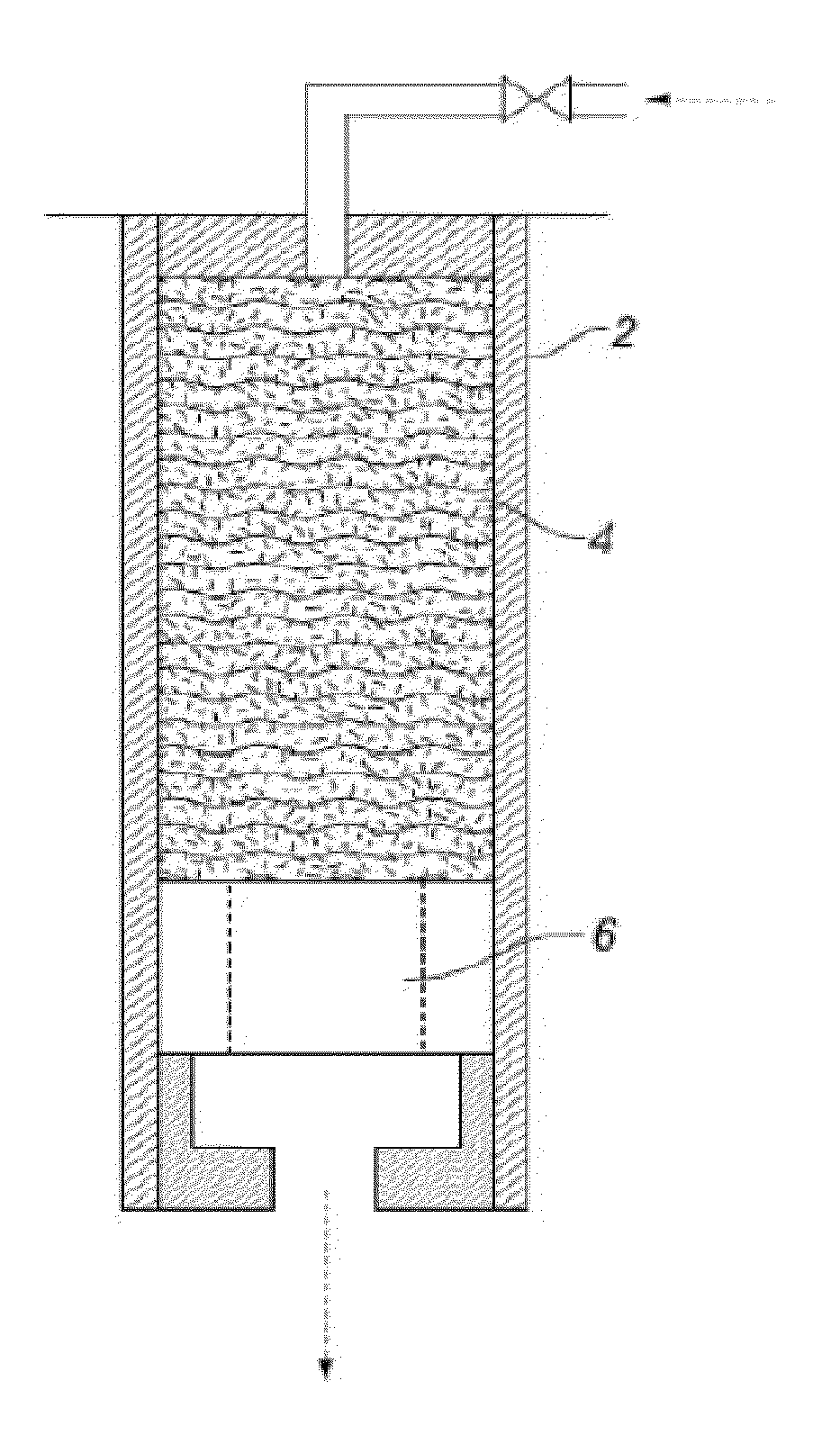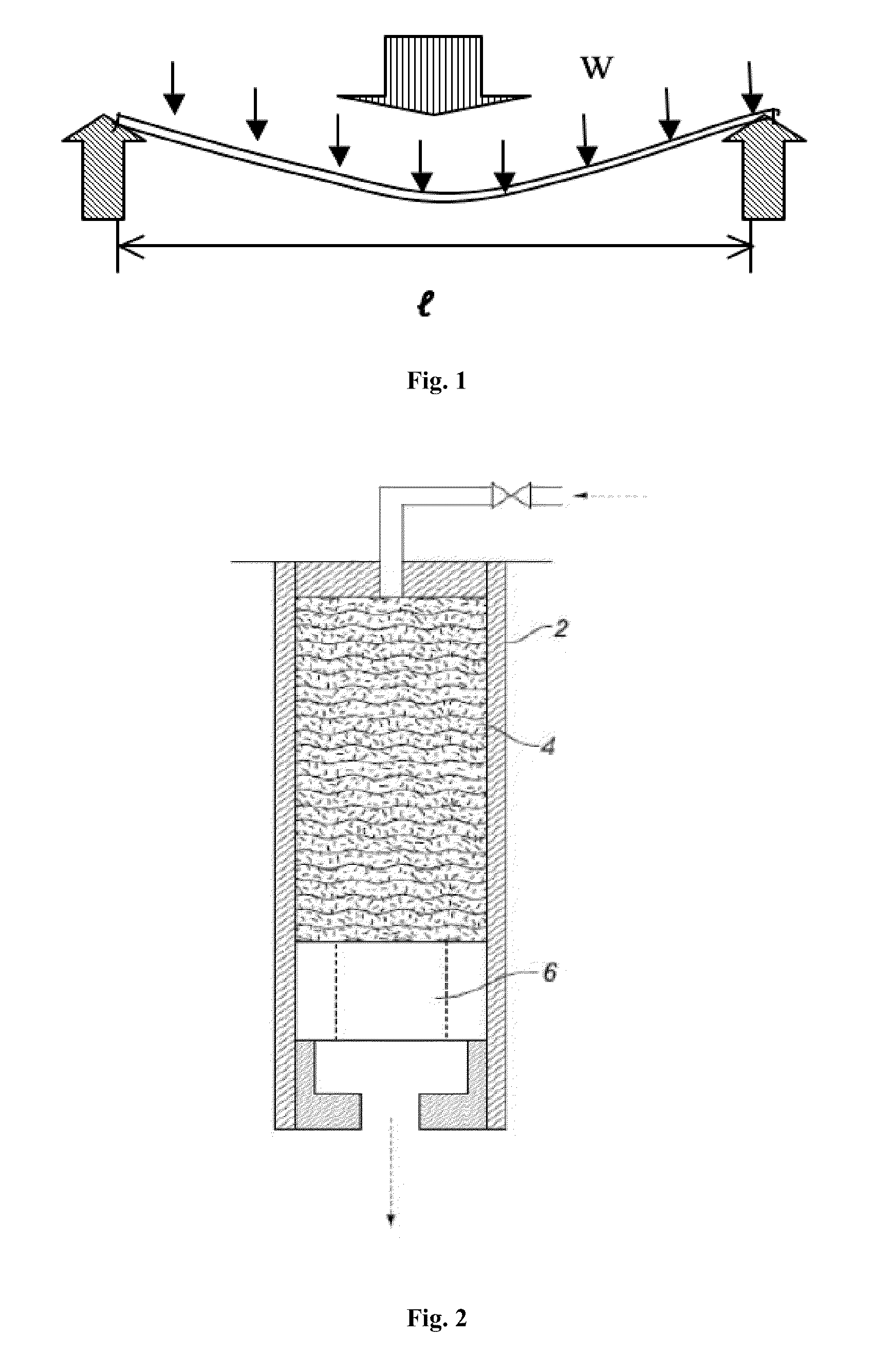Engineered fibers for well treatments
a technology of engineered fibers and well treatments, applied in the direction of sealing/packing, chemistry apparatus and processes, borehole/well accessories, etc., can solve the problems of failure to achieve the success rate and efficiency of the treatment, and the single solution that can cure all lost-circulation situations
- Summary
- Abstract
- Description
- Claims
- Application Information
AI Technical Summary
Problems solved by technology
Method used
Image
Examples
example 1
Comparison of GL, FM, and R1+R2 with 2 mm Holes
[0112]A series of tests was performed with the apparatus described in FIG. 2, fitted with 2-mm holes. The following fiber systems were tested: GL, FM and a 50:50 mixture by volume of R1 and R2 fibers (hereinafter designated as R1+R2). The fibers were mixed into the fluid formulation of Table 2, but without the coarse (1000 micron) calcium carbonate. To compare equal volumes of fibers, the overall fiber volume was 1.68 mL in 300 mL of base fluid. The results are presented in FIG. 4.
[0113]GL initially performed well. Low spurt was observed, and the filter cake provided good fluid loss control up to about 25 minutes. However, once the pressure rose to 2.41 MPa (350 psi), the filter cake failed. The R1+R2 fiber system had a relatively high spurt—almost 100 mL. However, following the spurt, the filter cake provided good fluid-loss control throughout the 30-min test. The FM system performed well: low spurt and good fluid-loss control througho...
example 2
Comparison of GL, FM, and R1+R2 with 2 mm Slot
[0114]The experiments of Example 1 were repeated, this time with the fluids exposed to a 2-mm slot. Like Example 1, the overall fiber volume was 1.68 mL in 300 mL of base fluid. The results are presented in FIG. 5.
[0115]The GL system demonstrated the lowest spurt. Excellent fluid-loss control was maintained until the pressure was raised from 0.69 MPa to 3.45 MPa. The GL plug failed and all the fluid exited the apparatus.
[0116]The R1+R2 system began with 19 g spurt and showed only 26 g fluid loss after 30 minutes. Unlike Example 1, the FM system was an instant failure at 0.69 MPa (100 psi). The total flow area for the 2 mm holes compared to the 2 mm slot was 3:1. The spurt for R1+R2 and for the GL fibers was also approximately 3:1 between the 2 mm holes and the 2 mm slot. FM is a highly flexible fiber, not a stiff fiber. It performed very well in the 2 mm holes, but failed to build a fiber mesh in the 2 mm slot.
example 3
Comparison of GL+Mica, and FM+Mica, with 2 mm Slot
[0117]This experiment compared the fluid-loss performance of a fluid containing both fibers and mica. The base fluid was the composition of Table 5. The apparatus described in FIG. 2 was fitted with a 2-mm slot. The results are presented in FIG. 6
[0118]One 300-mL fluid contained 1.34 mL of GL fibers and 2.36 mL of mica. Notice that the amount of fiber was lower than the previous examples. This composition corresponds to 20 wt % fiber and 80 wt % mica, and is hereinafter designated as GL+mica.
[0119]The other 300-mL fluid contained 1.34 mL of FM fibers and 2.36 mL of mica. Again, this composition corresponds to 20 wt % fiber and 80 wt % mica, and is hereinafter designated as FM+mica.
[0120]Both fiber / mica systems could plug the 2 mm slot, but the GL+mica-system plug allowed a very high spurt, and then could not resist high pressure and lost its strength when the pressure changed from 1.72 MPa (250 psi) to 2.07 MPa (300 psi). The FM+mica...
PUM
| Property | Measurement | Unit |
|---|---|---|
| Young's modulus | aaaaa | aaaaa |
| cross-sectional distance | aaaaa | aaaaa |
| length | aaaaa | aaaaa |
Abstract
Description
Claims
Application Information
 Login to View More
Login to View More - R&D
- Intellectual Property
- Life Sciences
- Materials
- Tech Scout
- Unparalleled Data Quality
- Higher Quality Content
- 60% Fewer Hallucinations
Browse by: Latest US Patents, China's latest patents, Technical Efficacy Thesaurus, Application Domain, Technology Topic, Popular Technical Reports.
© 2025 PatSnap. All rights reserved.Legal|Privacy policy|Modern Slavery Act Transparency Statement|Sitemap|About US| Contact US: help@patsnap.com



